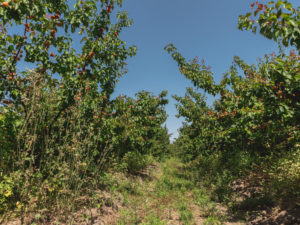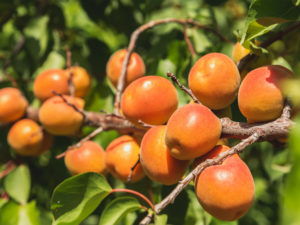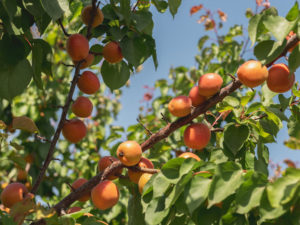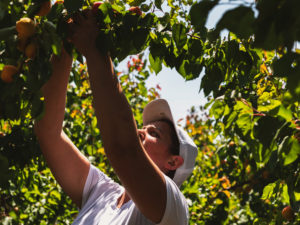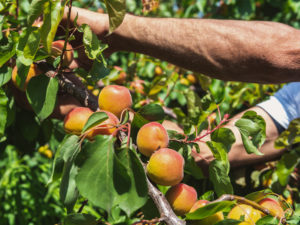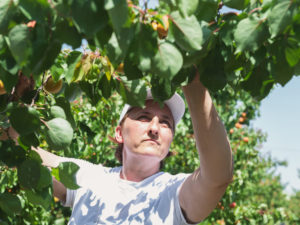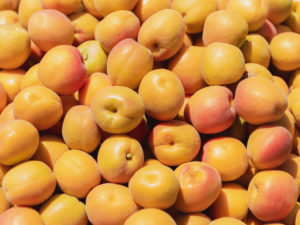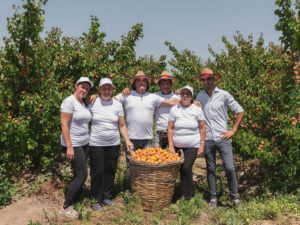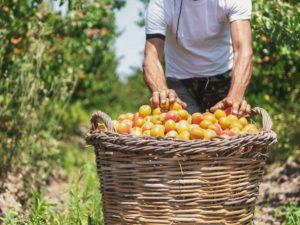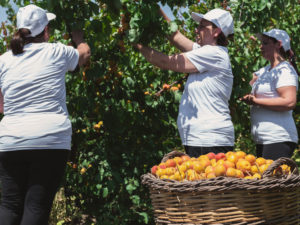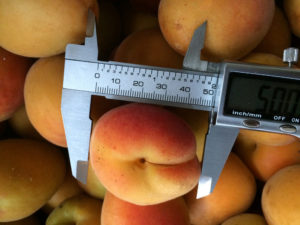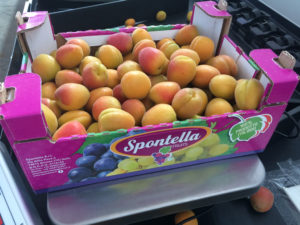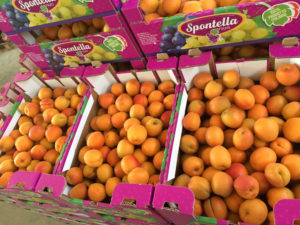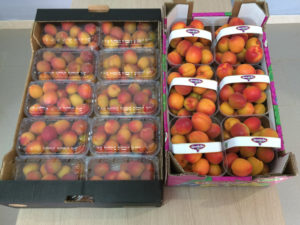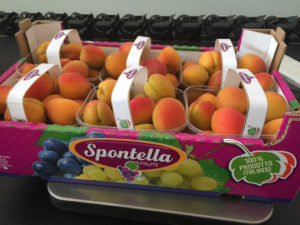Productive cycle of apricots
Excellence to the sunlight
The productive cycle of our apricots is predisposed following a complete row and respecting what is rigorously affirmed from the sanitary norms which regulate crops in general. The climate and soil’s characteristics of our cultivation area are very important in reference to the apricot tree which needs sunny position and mild temperature.
Preparation of soil
Before planting apricot tree is necessary to work accurately the field to obtain good fertility conditions. The operations of preparation of the soil are made in summer when the climate and humidity conditions are favourable. The levelling consists in the elimination of irregularities of surface for a better employment of the orchard’s equipment.
Growth
Apricot tree, as all the fruit plants, has slow growth which can be divided in 4 phases. Unproductive phase: after 3 years from the implantation only vegetative organs are developed as leaves, stems, roots. Increasing productive phase: production, began in the 4th or 5th year after the implantation, increases till reaching higher levels when the plant has 8-9 years.
Constant productive phase: from this moment the production remains constant for many years. Decreasing productive phase: after about 16-18 years from the implantation , the production begins to decrease. This decrease happens more or less quickly depending on the varieties. Anyway, after about 2-3 years from the beginning of this phase, it’s better to remove the plants, accomplishing explant, because the times of treatment become too long and the costs too high compared to the obtained production. The better period to make the explant has to be evaluated depending on the varieties and conditions of the plants. The ideal temperature for the growth is between 30 and 23 C.
Harvest
The harvest is a fundamental moment of the apricot tree’s cultivation because it concludes the productive cycle of field and begins the phase leading to packing and presentation of product on market. Then, it’s fundamental the choice of the harvest’s time, which has to optimize quality and conservation of taste through the time. In order to find the maturation’s status it’s fundamental to use objective glucoacidimetric index: base color of epicarp (external part of fruit), solid refractometric residue and consistence of pulp. a) fruit coloration: it’s the most used index and generally minimum color corresponding to changeable status is used (fruit color’s passing from green to yellow). To have best results and then harvest fruits in a status corresponding to their best quality, we produce various cultivar with scales of colors corresponding to the optimum of commercial quality; b) pulp’s hardness: it’s a very variable date depending on the cultivar and on the year, because it’s influenced a lot from the productive charge, weather conditions and agrarian technic; c) refractometric index and acidity: these two parameters have a similar behavior to what we said of pulp’s hardness (productive charge, weather conditions and agrarian technic) and their correct use is obtained only referring to scripted values and different for cultivar.
Varieties
The main varieties of apricots tree are almost 30 in Italy. They can be divided into 3 big groups depending on the time of maturation: 1. Precocious: they produce apricots which mature within mid-June. 2. Medium maturation: produced apricots mature at the beginning of July. 3. Delayed: because the fruits mature later than the other varieties, their cultivation is particularly recommended in the zones when spring frosts could happen.
Conservation
Apricot is a very delicate fruit but, on the contrary of what we think, is among the most resistant to long conservation and long trips. Thanks to the modern conservation’s technics, we allow it to join also farthest markets. After the harvest, grapes is packed on pallets and sent in store in order to be sent fresh. For overseas expeditions it’s conserved in refrigerated cells with appropriate packings to avoid the development of bacteria. Apricots are subject to a fast temperature’s decrease (-5° C) to be then conserved at 0° C.

